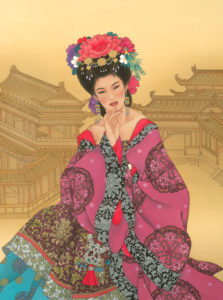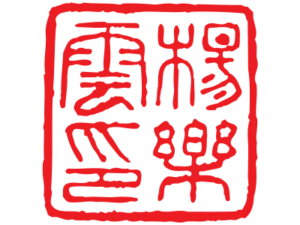Caroline Young, artwork and text
QFWF, September 17th 2020

Wu Zetian (625-705) first entered the Tang imperial household at the age of 14.
Not only was she stunningly beautiful, she was acutely intelligent and very astute in all her dealings as well. She also had an iron will.
Emperor Taizong quickly saw her abilities, and appointed her as his powerful personal secretary for all of his official dealings.
Emperor Taizong gave her the art name Wu Mei, meaning “glamorous”.
When Taizong died in 649, his youngest son, Li succeeded him as Emperor Gaozong of Tang. Gaozong who had always been infatuated with Wu Zetian, ascended the throne. He then made her his empress.
As Gaozong was always in poor health, Empress Wu soon became the actual ruler of China.
Upon Gaozong death, Empress Wu was able to stabilize the volatile situation in China because of her previous experiences of successfully resolving the political intrigues that arose during the twelve years she served as Emperor Taizong’s secretary.
In 690, she formally ascended the throne and changed her name to Wu Zhao.
She was a hardworking, caring ruler, and China enjoyed great peace and prosperity under her long reign.
Wu’s leadership resulted in important effects regarding social class in Chinese society and in relation to state support for Taoism, Buddhism, education, and literature.
Wu Zetian also had a monumental impact upon the statuary of the Longmen Grottoes and the “Wordless Stele” at the Qianling Mausoleum, as well as the construction of some major buildings and bronze castings that no longer survive.
She encouraged and supported female participation in politics, being the first to champion women’s rights, a millennium ahead of the women’s suffragette movement.






